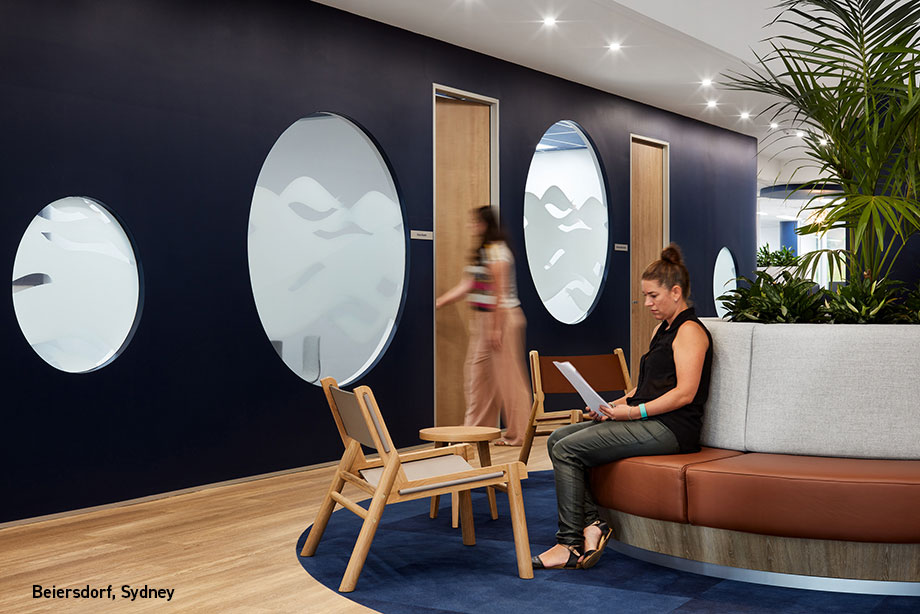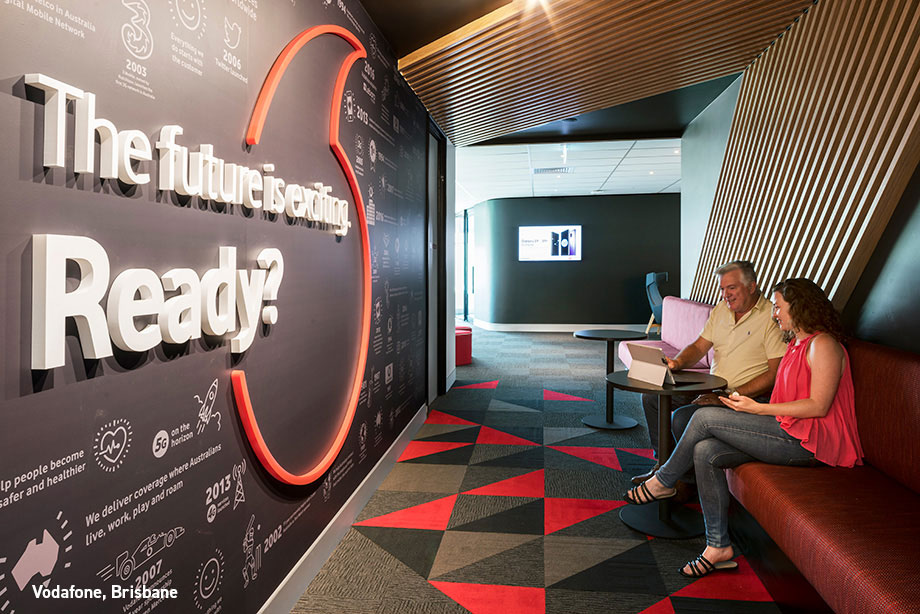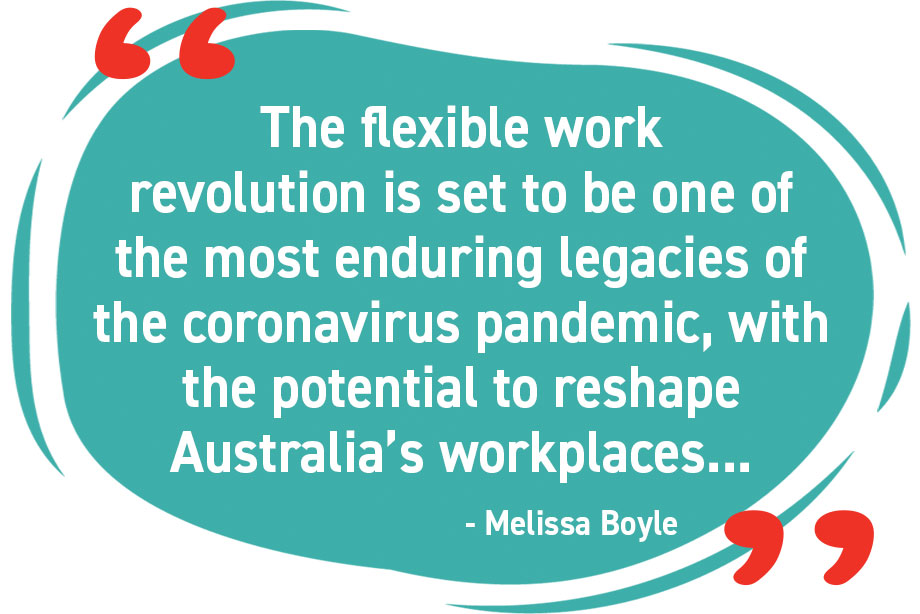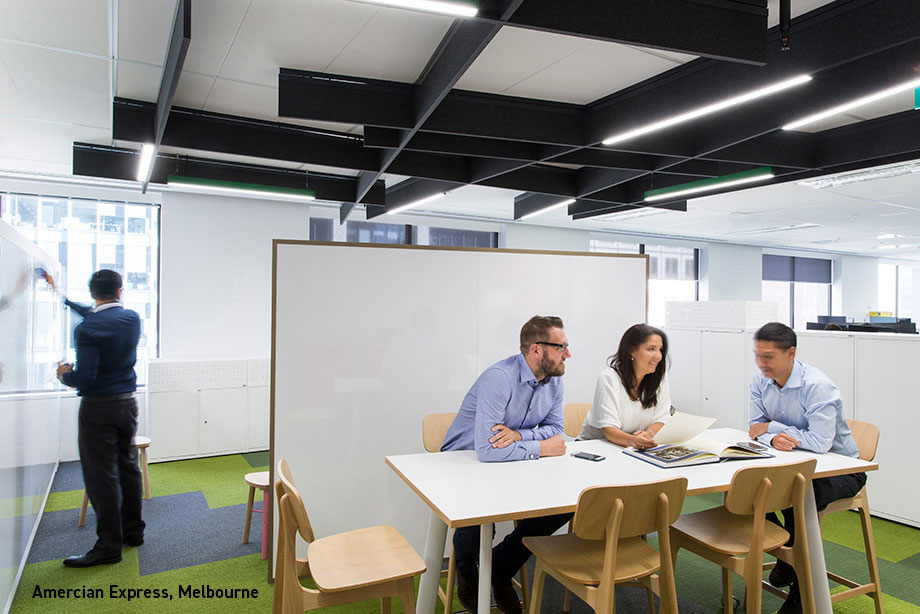Staying at Home is Working
Balanced with some office time for collaboration and social engagement
by Melissa Boyle
The Covid pandemic disrupted the way we work and has illustrated that traditional ways of working, which placed great value on presenteeism, are now firmly in the past. These major changes to employees’ preferences about different workplaces, work times and patterns are here to stay.
According to data released by the Australian Bureau of Statistics last August, the pandemic and subsequent lockdowns sparked rapid growth in Australia’s digital economy, evidenced by the widespread uptake of remote working and a shift toward shopping online.
Australians spent close to $42 billion online over the past 12 months, while more than 40% of employed people now regularly work from home, up from around 30% before the pandemic.
It is expected the shift to working from home will persist after the pandemic, despite efforts by employers to get workers back into the office. This disruption has generated new ways of working which people will sometimes find more suitable than their modes of working before the pandemic.
A recent survey of Australia’s largest companies and biggest employers also revealed an overwhelming majority expect to continue allowing employees to work at least part of the week from home once the pandemic ends. Many commented that they are happy to work with staff to strike a balance between remote and in-office work.
Australia’s Productivity Commission states that flexible working arrangements have already made us more productive – and have been associated with improved organisational productivity; an enhanced ability to attract and retain employees; and improved employee well-being.
Companies obviously want people to be in the office, and imbibing the culture of the organisation, especially people who are new to the organisation. But now they can also provide flexibility for people to spend some proportion of their week working from home.
When embraced correctly by management, working from home can extend to a wide variety of roles – perhaps wider than many appreciate. In our industry, you will still need Designers, Project Managers or Construction Managers available to attend project sites, but this can be balanced with working from home when not required on site.
It’s about choosing the environment for your day, and Australian and international research shows that people want to go into the office for collaboration and people connection, and be at home for deep thinking and administrative tasks.
Demand for flexible working conditions has seen the occupancy levels in CBD office markets decrease around Australia. Many of Australia’s biggest employers are reviewing their office footprints, deciding whether to cut back on space, and stating that hybrid work models will be entrenched even after the danger of the pandemic has passed.
The majority of organisations are still coming to terms with how their model of hybrid working will impact their need for space. Flexible models including “hub and spoke” and third party space are being explored in order to be accessible to their employee pool. While undoubtedly most businesses won’t require their pre-covid footprints today, the increased requirement for communal space paired with post-covid organic growth, will most likely take up the space reduction quickly, post-covid.
The flexible work revolution is set to be one of the most enduring legacies of the coronavirus pandemic, with the potential to reshape Australia’s workplaces.
The Incorp team have been reshaping Australia’s workplaces for the past 34 years, and would welcome the opportunity to co-create and deliver a unique hybrid environment that provides effective collaboration and social engagement for your team.




